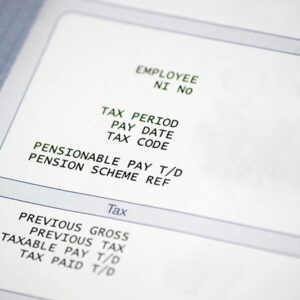4 Ideas to Make Your Workplace Pension Work Harder for You

This content is for information purposes only and should not be taken as financial advice. Every effort has been made to ensure the information is correct and up-to-date at the time of writing. For personalised and regulated advice regarding your situation, please consult an independent financial adviser here at Smith & Pinching in Norwich, Lowestoft and Eaton. The Financial Conduct Authority does not regulate taxation advice, estate planning or inheritance tax planning.
Workplace pensions can be a valuable pillar within a wider retirement plan. They offer many benefits including “free” contributions from your employer and tax relief on your own contributions. Yet are you getting the most from your workplace pension?
In this guide, our Norwich financial advisers offer four ideas to help make your workplace pension work harder for you.
If you want to discuss your financial plan with us, please get in touch to arrange a no-obligation financial consultation, at no cost to you:
01603 789966
#1 Take advantage of “employer matching”
By law, in 2023-24 an employer is required to contribute at least 3% to an employee’s workplace pension under the UK’s auto-enrolment rules. An employee must put in at least 5%, thus giving an overall combined minimum of 8%.
However, certain employers may be more generous than this. Perhaps they offer to pay more into your pension if you do the same. For instance, if you contribute 10%, they also put in 10%.
If so, this effectively doubles your pension contributions before you even consider tax relief or investment returns. Check with your employer about what they may offer with contribution matching. Some place a limit on how far there will go (e.g. between 3-8% of your salary).
#2 Consider salary sacrifice
Are you nearing the next income tax bracket with your salary? Are you keen to avoid paying needless tax whilst boosting your retirement pot? Salary sacrifice could be worth exploring.
For example, during your next salary negotiation, instead of asking for a pay rise you could consider asking for your employer to raise their contribution to your pension.
Not only could this help you keep out of the higher income tax bracket. It also means that both you and your employer could pay lower National Insurance (NI) contributions.
This can result in higher take-home pay for the worker. Your employer may even be willing to put their own NI saving into your pension – boosting it even further.
If you are already paying the Higher Rate of income tax just above the threshold of £50,270, then salary sacrifice can still be an effective financial planning strategy. Speak with a professional to fully explore your options here, using the best available information.
Remember that if you do opt for salary sacrifice, the reduction in gross pay could affect your borrowing capacity, e.g. for mortgage.
#3 Review your investment strategy
When a new employee joins an organisation, they are now typically enrolled on its workplace pension scheme. Many employees then do not look carefully at where their contributions are invested, perhaps even for years.
This can result in employees getting placed on the wrong investment strategy for their goals and needs. A workplace pension might offer, say, three strategies for members – e.g. low, medium, and high risk – and workers may be placed into one by default, perhaps according to their age.
This can result in missed opportunities or needless risks. For instance, suppose an employee joins the scheme and they are 25 years old. They have many years ahead of them until retirement and their risk tolerance is high.
Someone of this age would typically be invested in a portfolio which contains a significant proportion of stocks and shares (in this example, the medium or high risk strategy). This is because stocks and shares have historically outperformed most other investment types over the long term (although this is not guaranteed).
However, if the default fund choice is low risk, this could lead to missed opportunities for investment growth over their career.
Conversely, an older worker nearing retirement may wish to preserve the pension wealth they have already built up over their career. As such, a lower risk strategy might be more suitable. Yet they might be placed automatically into a portfolio with too much risk.
There are of course other examples of people who are younger but more risk averse, and older people with more risk tolerance. You must be comfortable with the vel of risk you are exposed to and ensure that you choose an investment strategy that suits your objectives. Consider exploring your investment options and preferences with a financial adviser to discern the best strategy for your goals, circumstances and time horizon.
#4 Check your costs
Investing inside a workplace pension typically involves committing your contributions to one or more investment funds. These funds pool other members’ contributions with yours to invest in a wide range of companies and other assets.
These funds come with their own costs which eat into your returns – i.e. investment management fees. Some funds are more expensive than others.
Sometimes, the process of reviewing your funds – and fund options – highlights deficiencies in your workplace scheme. Indeed, you may be able to access cheaper, higher-potential funds elsewhere in the market by opening your own pension.
This can be the right option for some people, but you should discuss the full implications with a financial adviser first. For instance, if you open a personal pension to replace your workplace pension, will your employer contribute to your new scheme instead?
Conclusion & invitation
If you are interested in discussing your own financial plan or investment strategy with us, please get in touch to arrange a no-commitment financial consultation at no cost to you:
01603 789966








